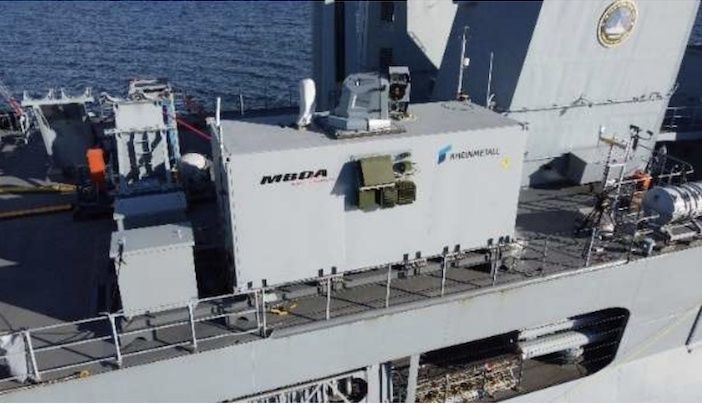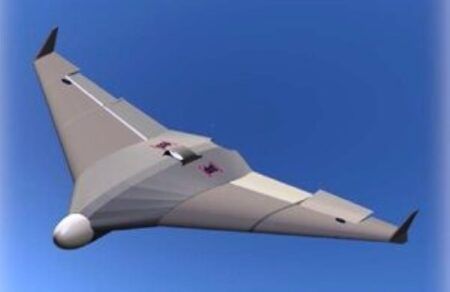The German Armed Forces has fired a shipboard laser weapon for the first time.
The laser weapon demonstrator, which was developed by MBDA and Rheinmetall was fired during testing conducted at the end of August on board the German frigate Sachsen in the Baltic Sea near the Putlos Major Training Area.
The high-energy laser (HEL) weapon system is being developed to defend against drones and drone swarms, as well as to engage attacking speed boats at close range. Engineers are also looking at using the system to destroy guided missiles and mortar rounds.
The demonstration comes after a test campaign that took place in July at Eckernförde Bay near the Bundeswehr’s Technical Centre for Ships and Naval Weapons. During these trials, the capabilities of various sensors, including the electro-optical sensor suite and the radar, were verified. In addition, the interplay between all the components and procedures in the entire operational sequence from target acquisition to engagement was put to the test. The trials included multiple highly realistic engagement scenarios.
Daniel Gruber, naval demonstrator project manager at MBDA Deutschland said, “Solid teamwork between the two partners played a key role in helping us integrate a fully functional, high-performance demonstrator onboard the frigate.
“Close cooperation with the command team of the Sachsen enabled direct communication with the future user. This way, ideas from the Navy could be directly incorporated or implemented during subsequent development.”
Thomas Baumgärtel, project manager for the naval demonstrator at Rheinmetall Waffe und Munition said, “This is the result of long years of research at both the participating companies. Many of the demonstrator’s system components were developed specially for the project and combined in this form for the first time.
“Moreover, given the extremely short integration phase for a system of this complexity, we’re very proud of the results achieved thus far and of how well the trials went. The impressive performance of the HEL effectors in protecting surface combatants from short- and very-short range threats can be credited to the joint efforts of everyone involved in the project – defense industry experts, government officials, and of course the men and women of the frigate Sachsen.”
MBDA is developing systems for target detection and target tracking, the operator console and linking the laser weapon demonstrator to the command-and-control system. Meanwhile, Rheinmetall is responsible for the slewing system, the beam guidance, the demonstrator container as well as mechanical and electrical integration of the demonstrator onto the deck of the Sachsen, and finally for the high-energy laser source, including its periphery.
Testing of the high-energy laser weapon is planned to continue until mid-2023.





